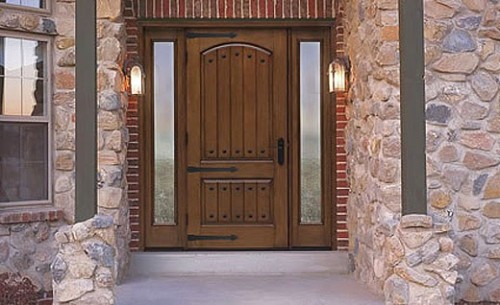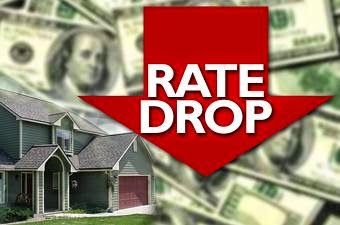Blog
Why Waste Thousands When You Can Invest?
Do you have children in college? Are you looking to help them move off campus? If so, here is some food for thought. (Warning: Math to follow)
The average cost of a three bedroom apartment near NCSU is $730/month/resident and multiplying that out by 12 months and by three roommates we come out to about $26,500/year of renting that entire space. Now think about purchasing a townhome, which i know is a daunting thought, and play out the numbers the same way. Near NCSU campus there are townhomes that go for about $160,000. Assuming that you pay the same amount of rent that you would on the apartment into the mortgage of the townhome, the three roommates would have collectively paid off $80,000 of the townhome by the time they graduate college by spending no more than they already were if they had rented an apartment. Now those students or a single student if it was under one name are able to make the rest of the payments from the profit they make from renting the property to other students and now that student(s) has an investment property right out of college that is already 50% paid off. Or the property could be sold and would likely have the same value or appreciated slightly.
Hopefully i didn’t lose you in the numbers. Take a minute and play out the scenario and try to see the endless benefits that come from investing rather than expensing.

NC Beaches Continuing To Stand Out
I have spoken multiple times about how the NC coast is a unique place and here is an outstanding statistic that North Carolina can brag about. Sunset Beach has been ranked by Trulia to be the second best vacation home market. With median home prices below $530,000 the market is accessible to a larger population and with that homes are able to turn over faster. Good for the economy, buyers, sellers, agents, vacationers, and local businesses.
http://www.bizjournals.com/charlotte/news/2016/07/19/n-c-beach-town-has-second-hottest-vacation-home.html
Time For A Cookout!
We are going into a beautiful weekend and with it many will be planning on cooking out. Well, if you are trying to come up with something different to throw on the grill other than the normal burgers and hot dogs, then check out these recipes and more like it on our “Favorite Foods” Pinterest board. http://www.yellowblissroad.com/recipes-for-the-grill/
New Pinterest Board- “Favorite Foods”
After requests for a Pinterest board that has food recipes, we have gone ahead and started up a “Food Favorites” which includes an assortment of appetizers, dinners, snacks, and desserts. If you are interested or looking for some good ideas then head on over and check it out. https://www.pinterest.com/homecoachrealty/food-favorites/
Would You Believe Raleigh is Where the Next Office Boom Will Be?
 Investors are turning to NERDS for the next big office boom.
Investors are turning to NERDS for the next big office boom.
We’re not talking Steve Urkel here. JLL, a real estate investment management firm, classifies NERDS as the five cities expecting to benefit most from the next wave of commercial real estate success: Nashville, Tenn.; East Bay, Calif.; Raleigh-Durham, N.C.; Denver; and Salt Lake City.
These cities, which are expanding and command lower prices than the U.S. average, are replacing big markets such as New York, San Francisco, and Washington, D.C., as big draws to investors. Companies seeking office space can get rental rates there that are 35 percent lower than the average U.S. rate, according to JLL. These cities also offer potentially high returns for investors in office REITS with cap rates, or income returns, between 5.5 percent and 7.5 percent.
“These markets are going to become attractive as these other markets continue to get hot, driven by Millennials who are going for quality of life,” says Stephen Collins, who heads the America Capital Markets business of JLL.
Here’s a closer look at each of the “hot office markets,” according to JLL:
- Nashville: Education and health care jobs account for 15.5 percent of the employment in the city.
- Office employment: 25% of total employment
- Vacancy rate: 8.6%
- East Bay, Calif.: A more affordable option near San Francisco and Silicon Valley, this area boasts rental rates that are 54 percent lower.
- Office employment: 24% of total employment
- Vacancy rate: 15.8%
- Raleigh-Durham, N.C.: Population growth has surged 7 percent since 2010, and professional jobs have risen 30 percent since 2011. JLL predicts that rent growth here will rise 6 percent this year.
- Office employment: 26% of total employment
- Vacancy rate: 12.8%
- Denver: The city’s diverse industry composition of tech, biotech, and professional and business sectors will likely help cushion the blow from the recent drops in the energy industry, JLL notes.
- Office employment: 29% of total employment
- Vacancy rate: 14.1%
- Salt Lake City: The city, as well as its state of Utah, has offered several tax breaks to entice more businesses to come.
- Office employment: 27% of total employment
- Vacancy rate: 11.7%
Which Day’s Had the Most Closings Occur in 2014?

- Mon., June 30
- Fri., May 30
- Fri., Aug. 29
- Wed., April 30
- Thurs., July 31
- Tues., Sept. 30
- Fri., Feb. 28
- Fri., June 27
- Fri., Oct. 31
- Fri., Aug. 15
2015 Remodeling Cost vs. Value: Less Is More

As the 2015 Remodeling Cost vs. Value Report makes clear, large-scale jobs aren’t likely to return sellers their full cost. But there are improvements worth doing in anticipation of an upcoming sale. Some will return almost 100 percent of their cost.
Top 5 projects nationally in terms of cost recouped:
- Entry door replacement (101.8%)
- Manufactured stone veneer (92.2%)
- Garage door replacement (88.5%)
- Siding replacement, fiber cement (84.3%)
- Garage door replacement (82.5%)
Kitchens still offer the most remodeling bang for the buck. The only remodeling job breaking into the top 10 in terms of payback is the minor kitchen remodel with a national average cost of $19,226 and a national average payback of 79.3 percent.
Source: www.realtormag.realtor.com
10 Reasons 2015 Will Rock for Real Estate

After a slowdown in the market this year, housing analysts and economists have high hopes for 2015. The real estate market is expected to build momentum across the board nest year, mostly because of a strengthening economy.
Here’s a recap of some of the real estate forecasts for 2015:
- Millennial force: Younger professionals are having more luck in the job market, which is expected to help more of them jump into home ownership in the new year. Overall, employment is on the rise, but jobs for Millennials — particularly those aged 25 to 29 — has risen by 3 percent. That’s one percentage point above the nationwide rate. According to some forecasts, Millennials are expected to drive two-thirds of household formations over the next five years. The forecasted addition of 2.5 million jobs next year, as well as an increase in household formation, will likely drive more first-time home buyers into home ownership, according to realtor.com® projections.
- Home prices stabilize: The double-digit price increases seen in 2013 have slowed, and more stable growth was the trend in 2014. As investors have retreated from the market, so have the rapid home prices in many markets. Home prices are expected to continue to edge up in 2015, with realtor.com® predicting a 4.5 percent gain. “After two years of abnormally high levels of home-price appreciation in 2012 and 2013, price increases moderated throughout 2014,” realtor.com® notes in its 2014 Housing Review. “We are now experiencing increases in home prices consistent with long-term historical performance.”
- Mortgage rates rising: Interest rates the last few months have been dipping below 4 percent, lowering the borrowing costs of home buyers and refinancing home owners. However, don’t expect the low rates to stick around much longer. Mortgage rates are expected to rise next year. Freddie Mac projects mortgage rates will likely average 4.6 percent but inch up to 5 percent by the end of 2015.
- Return of the 3 percent down payment: New programs are popping up to help more buyers break into home ownership with lower down payments. In early December, Freddie Mac and Fannie Mae announced conventional loan down-payment programs that will allow qualified first-time buyers to secure a fixed-rate mortgage with a 3 percent down payment. Prior to that, they needed at least 5 percent. Also, “there are many states as well as national programs, which offer grants that range from 1 to 5 percent to be used for a down payment or closing costs,” writes Damian Maldonado, co-founder of American Financing Corp., at CNBC. “These easing loan standards will allow more first-time buyers to enter the market.”
- Housing affordability declines: Affordability for homes, based on home-price appreciation and rising mortgage interest rates, will likely fall by 5 percent to 10 percent in 2015, according to realtor.com® forecasts. However, the decline in affordability could be offset by an increase in salaries next year for many households. “When considering historical norms, housing affordability will continue to remain strong next year,” realtor.com® notes in its report.
- New-home sales rebound: Single-family new-home starts barely budged in 2014 compared to 2013, and new-home sales remain far from normal levels. But that could finally turn around in 2015. Sales of new homes are expected to rise 25 percent as single-family construction picks up traction in 2015. The National Association of REALTORS® projects single-family housing starts to rise to 820,000 in 2015, which is still below the 1 million historical average. In the latest new-home report, sales dipped 1.6 percent in November, but builders are remaining optimistic heading into the new year. “As the labor market and broader economy continue to strengthen, we can expect the housing sector to gain momentum heading into next year,” says David Crowe, chief economist for the National Association of Home Builders.
- Foreclosures recede to pre-recession levels: The number of foreclosures is expected to continue to fall in 2015, but expect them to still be elevated in some pockets across the country — particularly in judicial states where foreclosures must wind through the courts. Foreclosure filings have been on the decline for most of this year. From January through November, foreclosure filings fell about 172 percent compared to the same period one year prior, according to RealtyTrac data. “Every month so far this year, we’ve been down from a year ago,” Daren Blomquist, vice president of RealtyTrac, said in a prior report. The only uptick has been in foreclosure auctions, which are up 5 percent in November compared to one year earlier. Foreclosures will likely fall to pre-crisis levels in 2015, Blomquist predicts.
- Drop in oil prices will boost housing: Oil prices have plunged 45 percent since June, which could inadvertently provide a lift to the housing market. “Households in the U.S. spend more than $1,800 on energy-related costs annually, and 22 percent of that energy consumption is due to residential real estate,” according to CoreLogic’s 2015 Housing Outlook. “So while the drop in oil prices typically has been linked to a reduction in driving-related expenses, it clearly also reduced energy-related expenses for residential real estate.”
- Rent rises to outpace home-value growth: Rents likely will continue to rise in the new year, and an increase in rental costs in 2015 could outpace annual home-price gains. Expect the rental market to remain a “landlord’s market” in 2015, with vacancy rates expected to stay below 5 percent in the new year, according to the National Association of REALTORS®. That should lead to demand pushing rents up even higher and keeping them above inflation, notes NAR Chief Economist Lawrence Yun. Apartment rents are projected to increase 4 percent in 2014 and 4.1 percent in 2015.
- Stronger economy leads to greater confidence: A stronger economy will likely lead to more demand for housing in 2015. “Overall, the economy finally appears to be gaining enough momentum to help provide the support that the housing market has needed for stronger recovery,” Sam Khater, deputy chief economist at CoreLogic, notes in the company’s 2015 Housing Outlook. “The combination of stronger employment growth and especially Millennial job growth makes for solid footing for the real estate market. Moreover, the recent drop in oil prices cannot be overstated, because not only does it directly lower the transportation and home energy costs for households, but it also improves consumer confidence. And confident consumers are more likely to spend on big ticket items, which is sweet music to the ears of the real estate market.”
Source: www.realtormag.realtor.com
Mortgage Rates Kick Off 2015 at 20-Month Low
 Borrowing costs moved even lower this week, with the 30-year fixed-rate mortgage averaging 3.73 percent, its lowest average since May 2013.
Borrowing costs moved even lower this week, with the 30-year fixed-rate mortgage averaging 3.73 percent, its lowest average since May 2013.
“Mortgage rates fell to begin the year as 10-year Treasury yields slid beneath 2 percent for the first time in three months,” says Frank Nothaft, Freddie Mac’s chief economist. “Meanwhile, the Fed minutes indicated ongoing discussion regarding the timing of the first rate hike.” Many housing economists have predicted that mortgage rates will rise sometime this year, with the 30-year fixed-rate mortgage likely reaching the upper 4 percent or 5 percent range by the end of the year.
Freddie Mac reports the following national averages with mortgage rates for the week ending Jan. 8:
- 30-year fixed-rate mortgages: averaged 3.73 percent this week, with an average 0.6 point, dropping from last week’s 3.87 percent average. The 30-year rate has not averaged this low since May 23, 2013, when it was 3.59 percent. A year ago at this time, 30-year rates averaged 4.51 percent.
- 15-year fixed-rate mortgages: averaged 3.05 percent, with an average 0.5 point, dropping from last week’s 3.15 percent average. Last year at this time, 15-year rates averaged 3.56 percent.
- 5-year hybrid adjustable-rate mortgages: averaged 2.98 percent, with an average 0.5 point, dropping from last week’s 3.01 percent average. A year ago, 5-year ARMs averaged 3.15 percent.
- 1-year ARMs: averaged 2.39 percent, with an average 0.4 point, falling from a 2.40 percent average the previous week. Last year at this time, 1-year ARMs averaged 2.56 percent.
Source: www.realtormag.realtor.com







